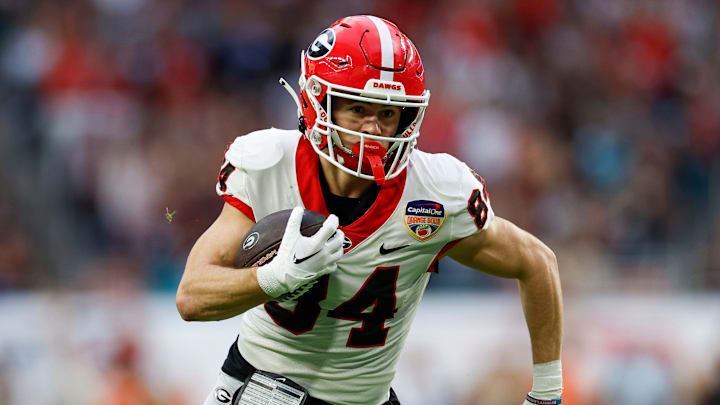Both the Kansas City Chiefs and Buffalo Bills came into the 2024 NFL Draft needing to make significant gains at the wide receiver position for both the present and the future. While both teams employ two of the best quarterbacks in the game, they still needed to identify and draft weapons that would help bolster their respective offenses as they sought to compete in the AFC this fall.
Given the lack of overall talent on either depth chart, the Chiefs and Bills both had serious decisions to make and it began with a roster-building philosophy: Elevate the floor of the position or raise the ceiling.
The Chiefs and Bills are both going with the same roster-building philosophy in the 2024 NFL Draft.
That might sound like a weird debate considering both are about bettering the position one way or the other, but the approaches are actually quite different.
Both the Chiefs and Bills had the same problem with a lack of reliable receivers. It'd be one thing if the Chiefs and/or Bills had some proven targets to whom Patrick Mahomes and Josh Allen could distribute the ball with a solid level of trust. At that point, the primary need in a wide receiver room might be for a high-end playmaker. Alas, that's not the case.
Instead, the Chiefs and Bills were both dealing with a lack of quality and quantity. For the Chiefs, Marquez Valdes-Scantling and Mecole Hardman hit free agency while holdovers like Skyy Moore and Kadarius Toney were known more for their foibles—dropped passes, uninspired routes, mental mistakes—than their highlights. Only Rashee Rice was getting the job done and now he's facing a suspension and legal issues.
The same is true of the Bills who have lost Gabe Davis in free agency before trading away Stefon Diggs. What was once a deep position was suddenly depending on castoffs like Curtis Samuel, Mack Hollins, Andy Isabella, or K.J. Hamler.
On the rosters of both the Chiefs and the Bills, there was a need coming into the draft for someone reliable to catch the ball at pretty much any role on offense as well as a need for a new "top dog"—someone who could turn into an impact player. When making draft picks, those players are not one-in-the-same after the elite options are taken off of the board.
When you're picking in the range of the Chiefs and Bills in the final few picks of the NFL Draft, a team has to roll the dice with a player who could raise the ceiling if he can live up to his potential. Unfortunately, that also means hoping that the player can overcome some obvious red flags—be it medical issues or character concerns or developmental hurdles. At the same time, raising the floor means grabbing a guy who might be more pro-ready but it doesn't necessarily mean he's also a game-changing talent.
So what ended up happening? The Chiefs and Bills both went for the ceiling.
With the 28th overall selection, the Chiefs traded up for the chance to grab Xavier Worthy out of the University of Texas. The ceiling is there in the form of truly elite top speed and acceleration to go with plenty of talent tracking the ball, but the floor remains potentially low because of concerns about his size—specifically his durability to hold up at the next level and be something more than other speed prospects like John Ross or Marquise Goodwin.
With the No. 33 overall selection, the Bills went with Florida State wide receiver Keon Coleman, another head-turning pass catcher who looks (and sometimes plays) like a prototypical X at the next level. However, there are concerns about consistency and speed and poor production toward the end of his final season for the Seminoles likely clouded his draft stock a bit.
Interestingly enough, the very next pick in the draft after Coleman was Ladd McConkey out of Georgia, a player who draws Cooper Kupp comparisons as a vacuum of sorts who can haul in anything and everything as a high-volume target. In short, a high-floor draft pick.
The good news is that both Coleman and Worthy could end up as two of the most productive players in this entire draft class and they've both landed in spots where they'll be afforded every opportunity to shine with teams that are well-coached and well-resourced. The Chiefs and Bills have high aims and they've maintained that mindset when making their draft choices.
